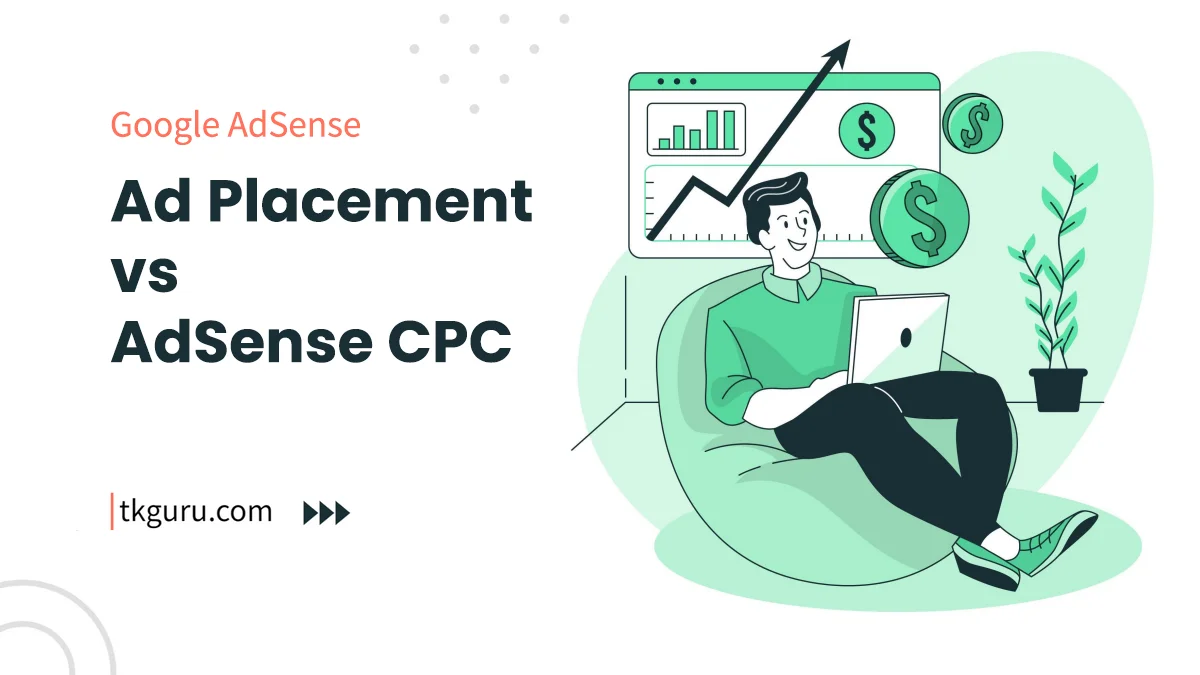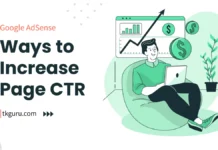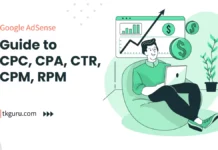Advertisements
Ratings

Ad Placement Affects AdSense CPC – Google AdSense has become a cornerstone for many website owners and publishers seeking to monetize their online presence.
One critical factor that greatly influences the success of AdSense campaigns is the strategic placement of ads on a website.
Ad placement not only impacts user engagement but also plays a pivotal role in determining the Cost Per Click (CPC) rates that advertisers are willing to pay for ad placements.
In this article, we’ll delve into the intricacies of ad placement, its profound effect on CPC rates, and best practices for optimizing ad positions to maximize revenue.
Contents
- 1. Understanding Ad Placement
- 2. Ad Placement Best Practices
- 3. Impact of Ad Placement on CPC
- 4. Optimizing Ad Placement for Mobile
- 5. User Experience and Ad Placement
- 6. Testing and Experimentation
- 7. Google AdSense Guidelines and Policies
- 8. Case Studies
- Conclusion
- Best Practices Checklist
- Ad Placement Affects AdSense CPC FAQs
1. Understanding Ad Placement
Ad placement refers to the specific locations on a webpage where advertisements are displayed to users.
These placements can vary in terms of visibility, prominence, and integration with the site’s content.
Effective ad placement is all about finding the right balance between user experience and revenue generation. Here are some common types of ad placements:
- Above the Fold: Ads positioned in the visible area of a webpage without requiring users to scroll down. These ads often garner higher attention due to their immediate visibility.
- In-Content: Ads placed within the body of the content itself, seamlessly integrating with the user experience. These ads can be effective if they align with the content’s context.
- Sidebar: Ads displayed in the sidebar of a webpage. While they may not be as prominent as other placements, they can still attract user attention.
- Header and Footer: Ads placed at the top or bottom of a webpage, offering consistent visibility.
2. Ad Placement Best Practices
Now that we’ve understood the various ad placement options, let’s explore best practices for each type:
1. Above the Fold Placement: Above the fold placements are prime real estate for advertisers. However, it’s crucial to maintain a balance between visibility and user experience. Consider these practices:
- Strategic Positioning: Place ads where users’ eyes naturally gravitate when they land on the page.
- Non-Intrusive: Avoid aggressive pop-ups that disrupt users’ reading experience.
- Responsive Design: Ensure that above the fold ads are optimized for both desktop and mobile users.
2. In-Content Placement: In-content ads can be highly effective if integrated thoughtfully. Here’s how to make the most of this placement:
- Relevance: Match ad content with the context of the article to enhance user engagement.
- Frequency: Don’t overwhelm users with too many in-content ads; maintain a balanced frequency.
- Native Ads: Opt for native ad formats that blend seamlessly with the surrounding content.
3. Sidebar and Header/Footer Placement: Sidebar and header/footer placements offer consistent visibility. Here’s how to optimize them:
- Sidebar Relevance: Ensure that sidebar ads are related to the content of the page.
- Header/Footer Balance: Place ads in the header/footer without compromising the overall site layout.
- Minimize Clutter: Don’t overcrowd the sidebar or header/footer with too many ads.
3. Impact of Ad Placement on CPC
The placement of ads on your website directly impacts user interaction, click-through rates (CTR), and ultimately, CPC rates.
The relationship between ad placement and CPC rates can be summarized as follows:
- Higher CTR: Ads placed strategically in areas where users engage most frequently tend to generate higher click-through rates.
- Engaged Users: Engaged users are more likely to interact with ads, indicating to advertisers that the audience is interested and active.
- Bid Competition: Higher CTR and engagement lead to increased competition among advertisers for your ad space, resulting in higher CPC rates.
In the next sections, we’ll delve into the specifics of optimizing ad placement for mobile, maintaining a positive user experience, and conducting effective testing and experimentation.
4. Optimizing Ad Placement for Mobile
With the surge in mobile browsing, optimizing ad placement for mobile devices is crucial. Mobile optimization involves:
- Responsive Design: Ensure that ad placements are responsive and adapt to different screen sizes.
- Mobile-Friendly Formats: Choose ad formats that work well on mobile screens, such as responsive ads and anchor/overlay ads.
- User-Friendly Experience: Ensure that ads don’t obstruct content or negatively impact mobile usability.
5. User Experience and Ad Placement
While maximizing CPC rates is important, it’s equally essential to prioritize a positive user experience.
The following practices ensure a balance between revenue generation and user satisfaction:
- Non-Intrusive Ads: Avoid intrusive ad formats that disrupt the user experience, such as pop-ups that cover content.
- Ad Relevance: Display ads that are relevant to the user’s interests and the content they’re consuming.
- Page Load Speed: Ensure that ad-rich pages don’t sacrifice loading speed, as slow pages can lead to user frustration.
6. Testing and Experimentation
A/B testing is a valuable tool for optimizing ad placement. Conduct experiments to identify which placements generate the highest engagement and CPC rates.
Here’s how to approach testing:
- Single Variable Testing: Change one element at a time to accurately assess the impact of each change.
- Track Metrics: Monitor metrics such as CTR, CPC, and overall revenue to evaluate the success of different ad placements.
- Continuous Optimization: Regularly analyze results and fine-tune your ad placement strategy based on performance.
7. Google AdSense Guidelines and Policies
While optimizing ad placement is essential, it’s equally important to adhere to Google AdSense’s guidelines and policies to ensure a compliant and successful monetization strategy.
Here are some key considerations:
- Ad Density: Google recommends maintaining a balanced ad-to-content ratio to provide a positive user experience. Excessive ads can lead to lower CPC rates and user dissatisfaction.
- Ad Layout: Avoid placing ads in a way that misleads users into clicking on them. Ensure that ad placements are clearly distinguishable from the content.
- Mobile-Friendly: Google emphasizes mobile-friendliness and responsive design for ad placements. Non-compliant ad formats can impact your CPC rates negatively.
- Interstitial Ads: Use interstitial ads sparingly, as they can disrupt the user experience. Ensure that users can easily dismiss these ads.
8. Case Studies
Case Study 1: Above the Fold Success
A news website experimented with moving its ad banner from below the fold to above the fold.
The change resulted in a significant increase in CPC rates and overall revenue. Users were more likely to notice and engage with the ad when it was immediately visible upon landing on the page.
Case Study 2: Native In-Content Optimization
A lifestyle blog integrated native in-content ads that seamlessly blended with the article’s topics.
This approach led to higher engagement, as readers perceived the ads as relevant content rather than intrusive promotions.
Consequently, the CPC rates increased, demonstrating the effectiveness of strategic ad integration.
Case Study 3: Mobile Optimization Pays Off
An online magazine optimized its ad placements for mobile devices, ensuring that ads displayed smoothly and didn’t disrupt the browsing experience.
The mobile-optimized placements garnered higher CPC rates, as advertisers recognized the value of reaching users on the go.
Conclusion
Strategic ad placement is a critical element in maximizing Google AdSense CPC rates and overall revenue.
By understanding the different types of ad placements and implementing best practices, website owners and publishers can strike a balance between user experience and revenue generation.
The interplay between ad placement, user engagement, and CPC rates underscores the importance of carefully curating your website’s ad strategy.
Remember that user experience should always be at the forefront of your ad placement decisions.
Advertisers are more likely to bid higher for placements that engage users and provide value.
A user-centric approach to ad placement not only benefits your revenue but also fosters a positive relationship with your audience.
Best Practices Checklist
To help you optimize your ad placements effectively, here’s a checklist to follow:
- Prioritize user experience while placing ads.
- Experiment with various ad placements to identify the most effective ones.
- Implement responsive design to ensure mobile compatibility.
- Avoid intrusive ad formats that negatively impact user engagement.
- Monitor metrics like CTR, CPC, and revenue to assess performance.
- Adhere to Google AdSense guidelines and policies.
- Conduct A/B testing to fine-tune your ad placement strategy.
- Continuously optimize your ad strategy based on user engagement and CPC rates.
By incorporating these best practices and staying attuned to user behavior and preferences, you can create an ad placement strategy that enhances both user experience and revenue generation.
Remember that ad placement is a dynamic process that requires continuous monitoring and adjustment to achieve optimal results.
Ad Placement Affects AdSense CPC FAQs
How does ad placement impact AdSense CPC?
Ad placement plays a significant role in determining AdSense CPC (Cost Per Click).
Ads placed in prominent, strategic positions that attract user attention tend to receive higher engagement and better CPC rates.
What are some effective ad placement strategies to improve AdSense CPC?
Effective ad placement strategies include:
- Placing ads above the fold, where they're visible without scrolling.
- Integrating ads within content, making them appear seamless.
- Positioning ads near high-traffic areas, such as navigation menus or engaging content sections.
How does ad relevance affect CPC rates based on placement?
Ad relevance to the content and user intent is crucial. Placing relevant ads in positions that align with user interests can lead to higher engagement and improved CPC rates.
Can improper ad placement negatively impact CPC rates?
Yes, improper ad placement can result in lower CPC rates. Ads that disrupt user experience or appear in less-visible areas may not attract sufficient clicks, impacting overall earnings.
Should I prioritize ad placement over user experience for better CPC rates?
Balancing ad placement and user experience is essential. While strategic ad placement can improve CPC rates, prioritizing user experience ensures visitors engage with your content and ads in a positive way, leading to sustainable earnings.
Ad placement significantly influences AdSense CPC rates, but it's important to maintain a user-centered approach.
Optimize ad placement to capture user attention without compromising the overall quality and user experience of your website.
| Web Hosting | Website |
| WordPress | Google Adsense |
| SEO | Affiliate Marketing |
| Blogging | YouTube |
Recent Posts
- 9 Proven Ways to Increase Page CTR by 50%
- 9 Proven Ways to Increase Page RPM by 50%
- A Detailed Guide to CPC, CPA, CTR, CPM, RPM
- Top 10 High CPC Countries: Maximizing Ad Revenue in Lucrative Markets
Related Tags
ad placement examples, types of ad placements, adsense ad placement policy, ad placement strategies, google adsense, best ad placement on website, best adsense ads placement, adsense placement






